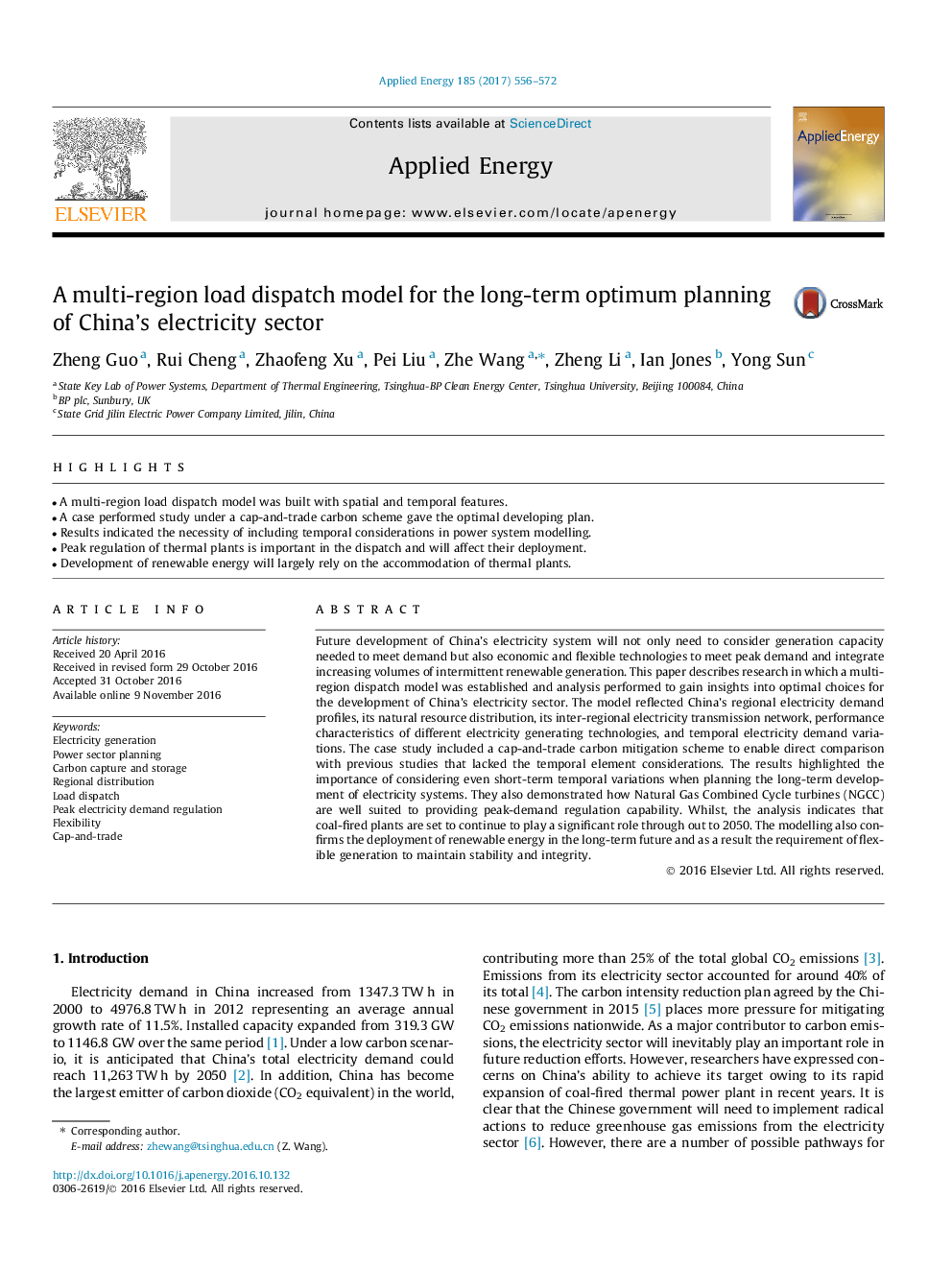| Article ID | Journal | Published Year | Pages | File Type |
|---|---|---|---|---|
| 4916995 | Applied Energy | 2017 | 17 Pages |
Abstract
Future development of China's electricity system will not only need to consider generation capacity needed to meet demand but also economic and flexible technologies to meet peak demand and integrate increasing volumes of intermittent renewable generation. This paper describes research in which a multi-region dispatch model was established and analysis performed to gain insights into optimal choices for the development of China's electricity sector. The model reflected China's regional electricity demand profiles, its natural resource distribution, its inter-regional electricity transmission network, performance characteristics of different electricity generating technologies, and temporal electricity demand variations. The case study included a cap-and-trade carbon mitigation scheme to enable direct comparison with previous studies that lacked the temporal element considerations. The results highlighted the importance of considering even short-term temporal variations when planning the long-term development of electricity systems. They also demonstrated how Natural Gas Combined Cycle turbines (NGCC) are well suited to providing peak-demand regulation capability. Whilst, the analysis indicates that coal-fired plants are set to continue to play a significant role through out to 2050. The modelling also confirms the deployment of renewable energy in the long-term future and as a result the requirement of flexible generation to maintain stability and integrity.
Keywords
Related Topics
Physical Sciences and Engineering
Energy
Energy Engineering and Power Technology
Authors
Zheng Guo, Rui Cheng, Zhaofeng Xu, Pei Liu, Zhe Wang, Zheng Li, Ian Jones, Yong Sun,
